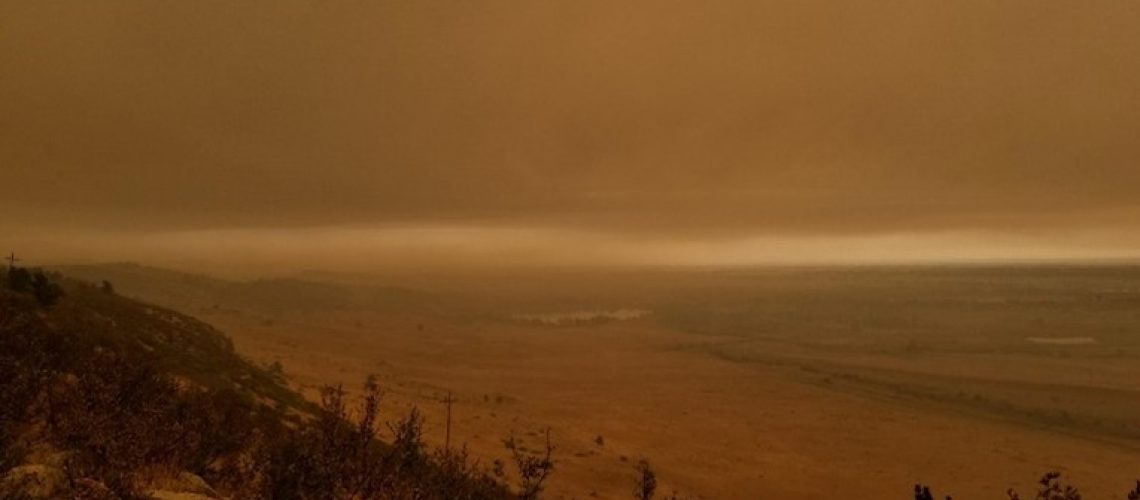Guest Post by Srijesh Pradhan, 2023-2024 Sustainability Leadership Fellow, and Ph.D. Candidate in the Department of Construction Management and the Department of Civil & Environmental Engineering at Colorado State University
The Orange Sky is Not the Limit
September 7, 2020, in Fort Collins, Colorado, unfolded with an eerie anomaly as I woke to a city engulfed in what seemed like an inferno. The scenes I captured that day in the photos below were reminiscent of apocalyptic imagery–stark and surreal. A month earlier, the smoke from the Cameron Peak Fire—which ignited on August 13, 2020, near Chambers Lake and ravaged the Arapaho and Roosevelt National Forests— had transformed the sunrises and sunsets into visions of a red giant star, casting the days in shades of hazy orange. But it was over this holiday weekend in September that the fire’s fury truly unleashed, expanding to over 96,000 acres[1]. On that day, Fort Collins was shrouded in an orange haze; the sky darkened unnaturally in the daytime, while ashes fluttered down from the sky. Beyond the haunting beauty of an orange sky lies a deeper, more destructive force: the heightened vulnerability of our communities to wildfires, a stark reminder that the visible effects were but the tip of the iceberg to the real issues at hand.
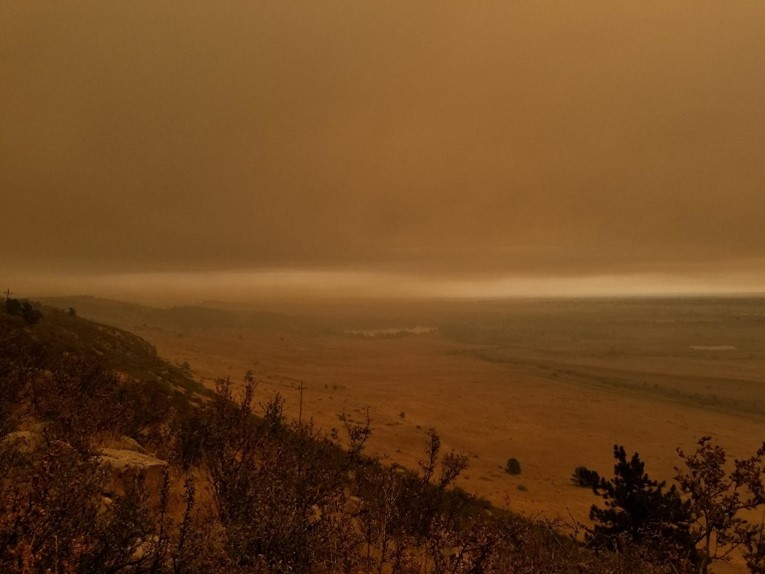
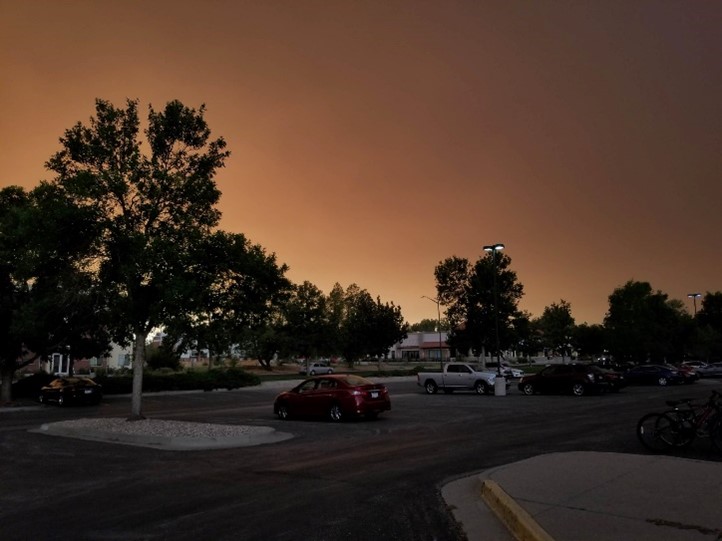
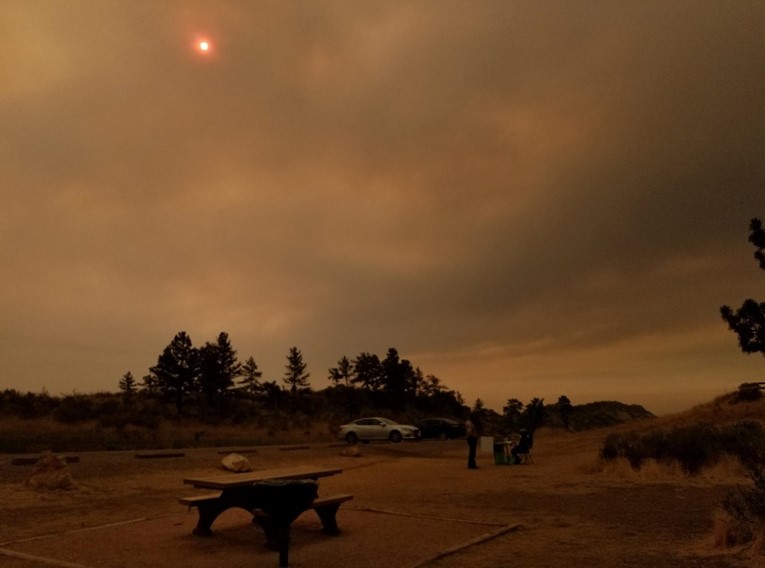
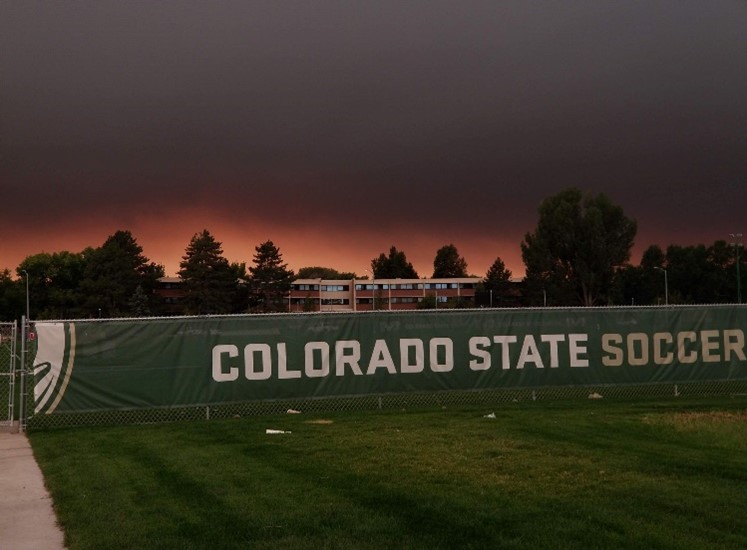
Community Risk and Recovery: Rebuilding Amidst Ashes
The devastating impact of wildfires in the Western U.S. became starkly apparent to me through my firsthand experience with the 2020 Cameron Peak fire, a stark reminder of the increasing vulnerability of our landscapes. Contained on December 2, 2020, this fire damaged or destroyed over 243 structures, 75% of which were single-family homes[2]. The following year, the 2021 Marshall Fire in Boulder County laid waste to more than 1,000 residential structures[3]. These catastrophic events underscore a disturbing trend: wildfires are becoming more frequent and severe, largely due to climate change. Compounding this issue is the rapid expansion of the Wildland-Urban Interface (WUI)—areas where residential communities and wildland vegetation converge. The WUI poses significant challenges due to the high rate of structure loss within these zones. Given the historical trajectory of wildfires in the region, alongside the impacts of climate change and WUI growth, there’s a grim expectation that this trend may not only persist but worsen[4].
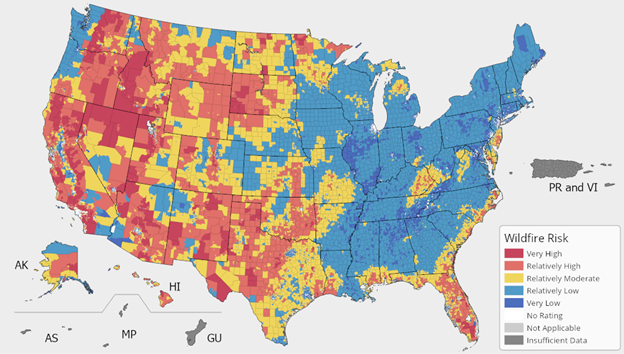
After a wildfire event, communities face an urgency to restore community functionality and replace the residential housing stock as quickly as possible. However, rebuilding residential homes following wildfires is neither quick nor simple, as it is influenced by a complex interplay of homeowner decisions, local economic factors, and community risk assessment. Notably, the vast majority of structures destroyed by wildfires are usually single-family residences where wood-framed buildings are very common[5]. The consequent need to rebuild these homes fuels a significant demand for building materials, particularly lumber. However, the capacity to meet this demand is constrained by the regional availability of construction resources, leading to shortages that can hinder post-disaster recovery efforts[6]. This brings us to a fundamental issue: Where does lumber, a critical component in rebuilding efforts, originate?
Stand-Replacing Fires: The Bigger Challenge
This question takes us beyond the aisles of lumber retail stores like Home Depot to a complex global issue deeply intertwined with the health of our planet’s forests. Lumber, essential for reconstructing homes and communities, fundamentally comes from the timber-producing forests. However, the supply chain and availability of this vital resource are at risk because of the increasing wildfires in recent decades. A recent study found that between 2001 and 2021, wildfires have ravaged 18.5–24.7 million hectares of these forests around the globe—an area comparable to the size of Great Britain[7]. This period has seen a significant increase in the annual burned area, indicating a trend of substantial timber losses driven by wildfires under the escalating conditions of climate change. With global wood consumption expected to grow by 54% between 2010 and 2050[8], the escalating impact of wildfires on timber resources highlights the urgent necessity for adaptive management strategies to secure a sustainable supply amidst rising demand.
Securing Our Future: Sustainable Solutions in the Wake of Wildfire Devastation
Climate change and the resulting long-term effects of wildfires on residential communities and timber-producing forests need a forward-thinking approach that addresses both immediate recovery and long-term sustainability. This necessitates a multi-faceted strategy that encompasses not only the restoration of affected communities and timber resources but also the proactive management of forests to enhance their resilience against future wildfires. Integrated forest management practices that combine traditional knowledge with scientific research can offer a blueprint for reducing the vulnerability of timber-producing forests. This includes selective logging, the maintenance of natural firebreaks, and the encouragement of species diversity to create more resilient ecosystems[9]. For residential communities, rebuilding with fire-resistant materials and designs, alongside the strategic planning of settlements to minimize wildfire risks, will be essential. Moreover, the role of technology and innovation in monitoring forest health, predicting fire outbreaks, and enhancing firefighting capabilities cannot be overstated. From satellite imagery for early detection to machine learning-driven models for risk assessment, leveraging technology will be pivotal in our adaptation strategies.
Only by tackling the timber supply problem at its source can we hope to mitigate the severity of wildfires on the supply chain, thereby securing the future of our timber supply and helping in the swift recovery of residential communities. In this endeavor, every stakeholder, from governments and timber industries to local communities and individuals, has a role to play in crafting a sustainable future resilient to the challenges of wildfire devastation.
References:
[1] GreeleyTribune, “Smoke and ash from Cameron Peak Fire impacts Greeley, Front Range air quality.” Accessed: Mar. 04, 2024. [Online]. Available: https://www.greeleytribune.com/2020/09/07/cameron-peak-fire-smoke-ash-impact-greeley-front-range-air-quality/
[2] Larimer County, “Larimer County Damage Assessment Report 2020 Cameron Peak Fire,” 2021. [Online]. Available: https://www.larimer.org/sites/default/files/assessors_office_cameron_peak_fire_report.pdf
[3] Boulder County, “Boulder County releases updated list of structures damaged and destroyed in the Marshall Fire.” [Online]. Available: https://bouldercounty.gov/news/boulder-county-releases-updated-list-of-structures-damaged-and-destroyed-in-the-marshall-fire/
[4] H. Mahmoud and A. Chulahwat, “Unraveling the Complexity of Wildland Urban Interface Fires,” Scientific Reports, vol. 8, no. 1, p. 9315, Jun. 2018, doi: 10.1038/s41598-018-27215-5.
[5] NAHB, “Wood-Framed Home Share Increased for Three Straight Years.” [Online]. Available: https://eyeonhousing.org/2023/08/wood-framed-home-share-increased-for-three-straight-years/
[6] E. Arneson, A. Javernick-Will, M. Hallowell, and R. Corotis, “Predicting Postdisaster Residential Housing Reconstruction Based on Market Resources,” Natural Hazards Review, vol. 21, p. 04019010, Feb. 2020, doi: 10.1061/(ASCE)NH.1527-6996.0000339.
[7] C. G. Bousfield, David. B. Lindenmayer, and D. P. Edwards, “Substantial and increasing global losses of timber-producing forest due to wildfires,” Nature Geoscience, vol. 16, no. 12, pp. 1145–1150, Dec. 2023, doi: 10.1038/s41561-023-01323-y.
[8] Mongabay, “Timber harvests to meet global wood demand will bring soaring emissions: Study.” [Online]. Available: https://news.mongabay.com/2023/07/timber-harvests-to-meet-global-wood-demand-will-bring-soaring-emissions-study/
[9] EOS Data Analytics, “Selective Logging: Methods, Specifics, And Impacts.” [Online]. Available: https://eos.com/blog/selective-logging/
